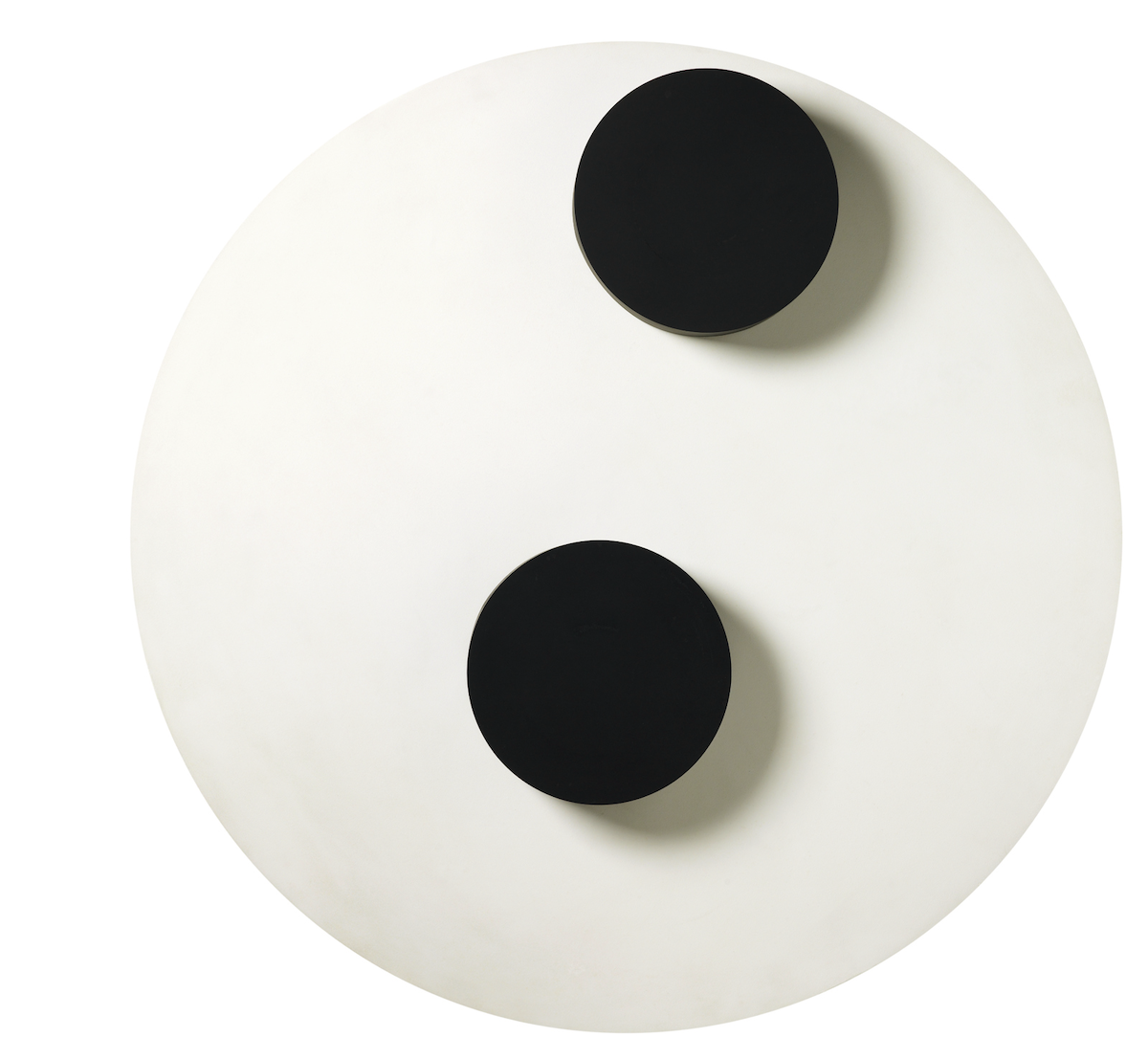Wood, metal, electric motors
Ø 120 cm
Hilti Art Foundation, Schaan
Gerhard von Graevenitz was interested in the study and visualisation of phenomena like movement, light, space, time, structure, randomness or progression. He is considered a representative of the constructive-concrete art of the younger generation which had turned in particular to kinetics.
Von Graevenitz won international acclaim for his kinetic objects, for the most part square, white panels with motorized movable parts, such as slats, bars and rhombuses. He also made circular works: movable discs mounted on larger circular panels.
In 1961 the artist built his first kinetic object in Munich, where he also had it patented. The two black discs on a white ground might be read at first sight as the 'cool' abstract rendition of a technical device. In art history, particularly in the Renaissance, the perfectly circular tondo was considered an ideal format of sacrosanct perfection, used by such artists as Botticelli, Raphael and Michelangelo as a vehicle for their Madonna paintings.
Von Graevenitz defined his circular discs as independent fields, presenting viewers with an entirely new visual experience, for the unpredictable, accidental movement of the parts unsettles and obstructs perception. No specific rhythm can be identified in these works, as they ceaselessly yield new visual combinations. In the present work, the two black discs slowly rotate in all directions on the white tondo, which in turn circles around its own axis. Two different, mutually independent sequences of movement are combined, showing a harmony that does not, however, preclude exceptionally surprising encounters, much like those between celestial bodies. We are faced with a visual and intellectual challenge since the movement gives us no 'insight into the control system.'
Angela Schneider
"the kinetic objects produce change on their own, and in this case the purpose of limiting myself to white is to place the greatest possible emphasis on motion."
Gerhard von Graevenitz
